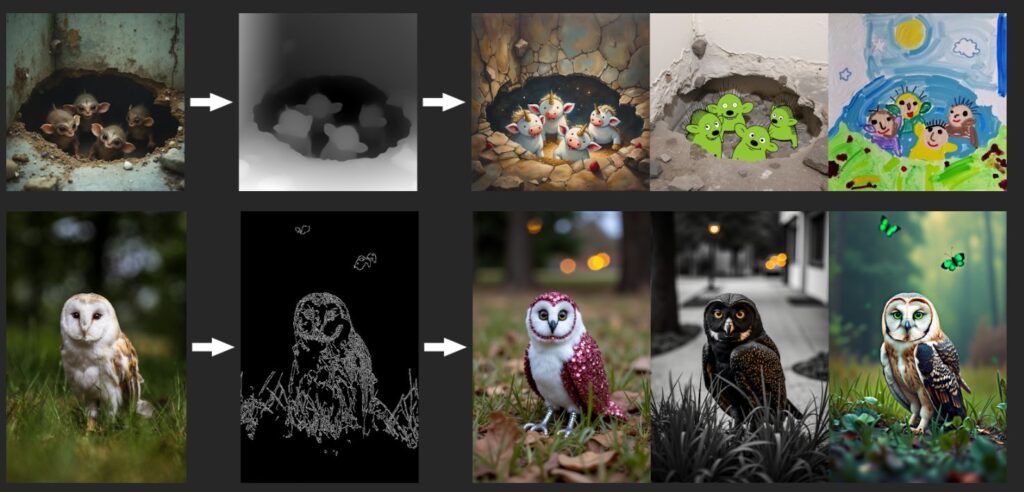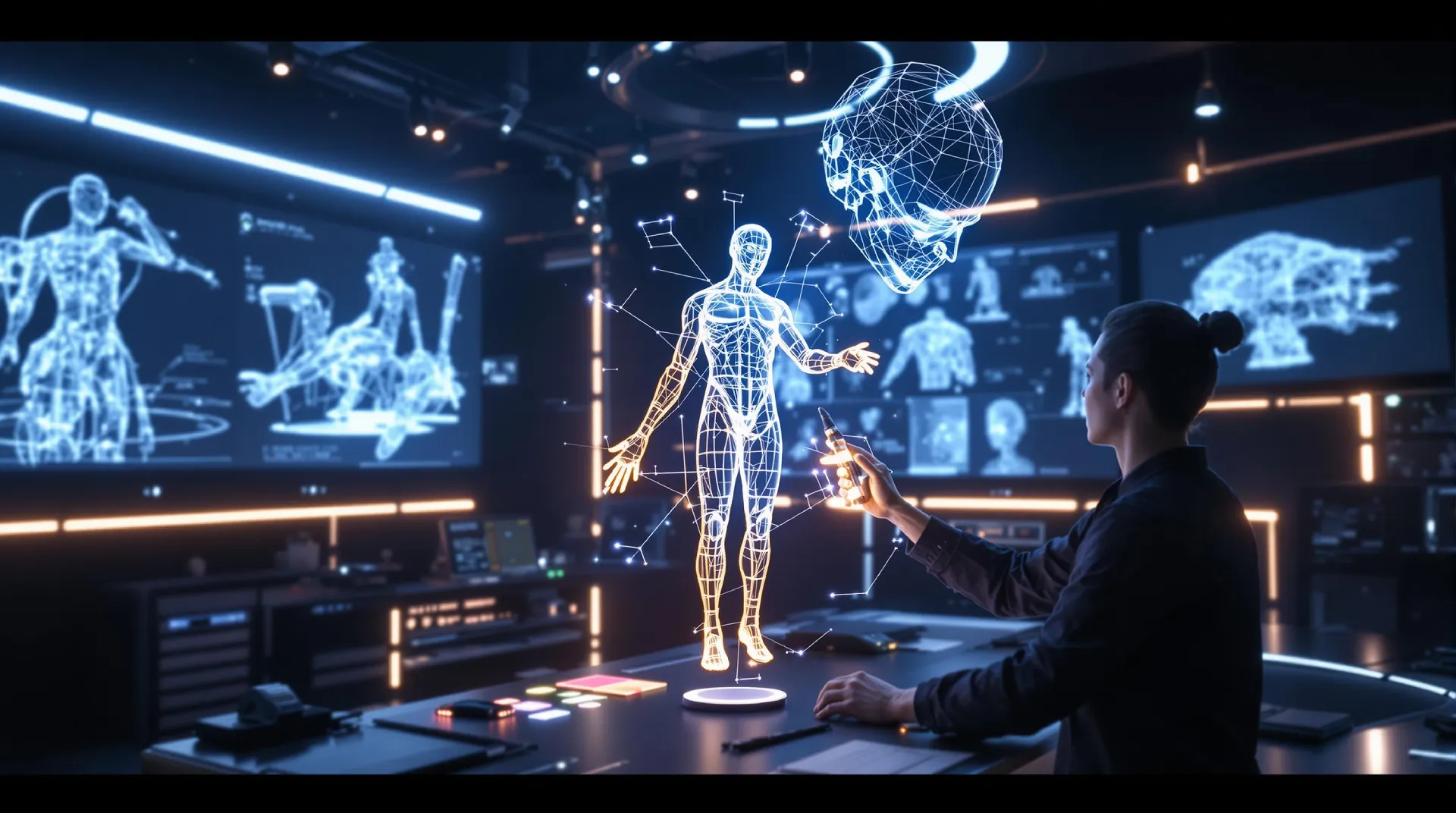Podcast Discussion: Deep Dive Into This Article.
The AI landscape continues to evolve at breakneck speed, offering a plethora of tools and innovations that empower users across various domains. From powerful reasoning models to advanced video editing features and 3D creation tools, this article explores the latest breakthroughs in artificial intelligence. Here’s what we’ll cover:
1. DeepSeek AI’s Reasoning Model: A Challenger to OpenAI
2. FLUX: Revolutionary Updates with Canny, Fill, and Redux
3. Runway’s Gen-3 Expand Video Feature
4. Using ChatGPT for Flowcharts and Diagrams
5. NVIDIA Edify 3D: Redefining AI in 3D Modeling
6. SAMURAI AI: Cutting-Edge Object Tracking
7. OpenAI Sora: A Leaked Glimpse at the Future of Text-to-Video
8. Dream Machine by Luma AI: A Creative Partner for Storytelling
1. DeepSeek AI’s Reasoning Model: A Challenger to OpenAI

DeepSeek AI has unveiled its DeepSeek-R1-Lite-Preview, a reasoning-focused model claimed to rival OpenAI’s o1-preview. This model boasts advanced problem-solving capabilities, leveraging chain-of-thought reasoning to outline complex processes before delivering a final answer. DeepSeek’s approach positions it as a global competitor, particularly in the context of AI geopolitics, as Chinese developers increasingly challenge Western dominance in AI.
Technical Highlights:
- Reasoning Capability: Superior handling of multi-step tasks through structured logic.
- Open vs. Proprietary: A growing trend of open-source offerings contrasts with Western proprietary models.
- Practical Applications: Problem-solving in research, education, and enterprise settings.
DeepSeek-R1-Lite-Preview exemplifies how emerging markets are reshaping the AI development landscape, driving innovation and competition globally.
See how DeepSeek AI’s Reasoning Stacks up!

Benchmark Explanations and DeepSeek’s Performance
- AIME 2024: Focuses on advanced mathematical problem-solving, emphasizing reasoning over recall.
- Performance: DeepSeek-R1-Lite-Preview leads with the highest pass@1 score, surpassing OpenAI’s o1-preview and other models.
- MATH: Evaluates accuracy in solving complex mathematical tasks, testing logical and computational reasoning.
- Performance: DeepSeek dominates with the highest accuracy, highlighting its superior reasoning abilities.
- GPQA Diamond: Assesses general knowledge and understanding of complex relationships.
- Performance: While competitive, DeepSeek is slightly outperformed by OpenAI’s o1-preview.
- Codeforces: Measures performance in competitive programming by solving algorithmic problems efficiently.
- Performance: DeepSeek secures the highest rating, demonstrating its strength in algorithmic and computational tasks.
- LiveCodeBench: Tests coding efficiency and output accuracy in real-world programming scenarios.
- Performance: OpenAI’s o1-preview edges ahead, but DeepSeek remains competitive.
- ZebraLogic: Evaluates logical reasoning capabilities, particularly in pattern recognition and deduction.
- Performance: DeepSeek achieves the highest accuracy, excelling in logical problem-solving.
In summary, DeepSeek-R1-Lite-Preview outperforms competitors in AIME 2024, MATH, Codeforces, and ZebraLogic, while being close behind in GPQA Diamond and LiveCodeBench. This establishes it as a leader in reasoning, mathematical, and logical benchmarks.
2. FLUX: Revolutionary Updates with Canny, Fill, and Redux

FLUX, known for its advanced generative tools, introduced three groundbreaking features:
- Canny: Utilizes edge detection to guide image generation, ensuring structural integrity during creative processes.
- Fill: Adds seamless inpainting and outpainting capabilities, allowing users to edit or expand images naturally.
- Redux: A powerful variation generator, creating stylistic alternatives of existing images while preserving their core identity.
Technical Highlights:
- Canny: Edge-guided transformations with high accuracy.
- Fill: Mask-based editing for clean integrations.
- Redux: Variation control similar to MidJourney’s Vary feature but optimized for precision.
FLUX’s innovations position it as a leading tool for creatives seeking control and versatility in their workflows. Access the tools via Replicate.
While FLUX WebUI users can now enjoy these features directly, it’s worth noting that ControlNets have already enabled similar capabilities for users of ComfyUI. Interestingly, these ControlNets make use of FLUX models via the FLUX developer checkpoint, demonstrating the edge in locally hosted open AI model creation.
Watch the Flux in Action

Watch the My ComfyUI Flux Outpainting Model in Action
3. Runway’s Gen-3 Expand Video Feature

Runway’s Gen-3 Expand Video enables content creators to adjust video aspect ratios dynamically, ideal for adapting footage to different platforms like YouTube and Instagram. By generating new content around existing frames, users can extend videos naturally without reshooting.
Technical Highlights:
- Aspect Ratio Adaptability: Seamlessly transform videos from portrait to landscape and vice versa.
- Guided Expansion: Use text prompts or existing video frames to direct the expansion process.
- Cinematic Applications: Create looping effects, zooms, or dynamic reveals with precise control.
This feature revolutionizes video editing, making it easier to adapt content for diverse audiences..
Watch Runway in Action
Content Creator in X Modifies an iconic Movie Scene
4. Using ChatGPT for Flowcharts and Diagrams

ChatGPT’s new capabilities streamline the creation of flowcharts and diagrams, eliminating the need for traditional, time-intensive tools. By generating Mermaid code, ChatGPT allows users to craft visualizations that can be easily imported into platforms like Draw.io.
Technical Highlights:
- Mermaid Code Integration: Converts textual instructions into ready-to-use flowchart syntax.
- Customization Options: Modify colors, shapes, and layouts for enhanced clarity.
- Practical Use Cases: Project management, programming roadmaps, and educational resources.
This tool bridges the gap between conceptual planning and visual representation, offering speed and precision.
Watch ChatGPT in Action

5. NVIDIA Edify 3D: Redefining AI in 3D Modeling

VIDIA’s Edify 3D allows users to create high-quality, editable 3D models from text or images. This tool supports industries like gaming, virtual reality, and digital art by democratizing 3D content creation.
Technical Highlights:
- Text-to-3D and Image-to-3D: Easily transform ideas into detailed 3D assets.
- Editable Outputs: Fully customizable assets to suit various projects.
- Creative Applications: Narrative design, architectural visualization, and immersive experiences.
Edify 3D offers an unprecedented level of control and creativity, setting a new standard in 3D modelling.
Watch Edify in Action
6. SAMURAI AI: Cutting-Edge Object Tracking

SAMURAI AI adapts Meta’s SAM for zero-shot visual tracking, excelling in challenging scenarios like crowded scenes and fast-moving objects. Its open-source nature makes it accessible for developers worldwide.
Technical Highlights:
- Enhanced Tracking: Handles self-occlusion and overlapping objects with precision.
- Versatility: Applicable in video editing, surveillance, and sports analytics.
- Open Source: Community-driven improvements for continuous evolution.
SAMURAI AI is reshaping the future of object tracking with its robustness and accessibility.
Watch Samurai AI in Action
7. OpenAI Sora: A Leaked Glimpse at the Future of Text-to-Video

The unauthorized release of OpenAI Sora, a text-to-video model, provided users a sneak peek into its capabilities. With 1080p resolution and up to 10-second outputs, Sora showcases the potential of text-guided video creation.
Technical Highlights:
- Text-to-Video: Translate natural language into cinematic visuals.
- Resolution and Length: Outputs high-quality, short-form videos.
- Creative Impact: Highlights the intersection of AI and storytelling.
- The Leak: Beta testers reportedly released access as a protest over unpaid contributions and lack of transparency.
- OpenAI’s Response: The company quickly revoked access, emphasizing that Sora remains in a research phase while committing to future grants and artist support.
Despite its temporary availability, Sora demonstrates the transformative power of AI in video content creation. enables users to maximize the potential of AI-driven tools effortlessly.
Here is the Huggingface leak link that whipped social media into a frenzy.
Watch OpenAI’s Sora in Action
8. Dream Machine by Luma AI: A Creative Partner for Storytelling

Luma AI’s Dream Machine introduces features like consistent character design, text-guided storytelling, and cinematic video expansion. These tools empower creators to craft cohesive narratives across mediums.
Technical Highlights:
- Remix Anything: Reference and remix existing styles or characters for tailored outputs.
- Consistent Characters: Maintain continuity across images and videos.
- Advanced Cinematography: Control camera motion, start/end frames, and looping effects.
Dream Machine positions itself as an indispensable tool for artists, filmmakers, and storytellers.
Watch Luma Dream Machine in Action
Conclusion
From advanced reasoning models like DeepSeek to creative tools like Dream Machine, the latest AI developments highlight the immense potential of artificial intelligence across industries. Whether you’re a content creator, a developer, or simply curious about AI, these innovations offer tools to enhance creativity, productivity, and problem-solving.
This article reflects the opinions of the publisher based on available information at the time of writing. It is not intended to provide financial advice, and it does not necessarily represent the views of the news site or its affiliates. Readers are encouraged to conduct further research or consult with a financial advisor before making any investment decisions.



